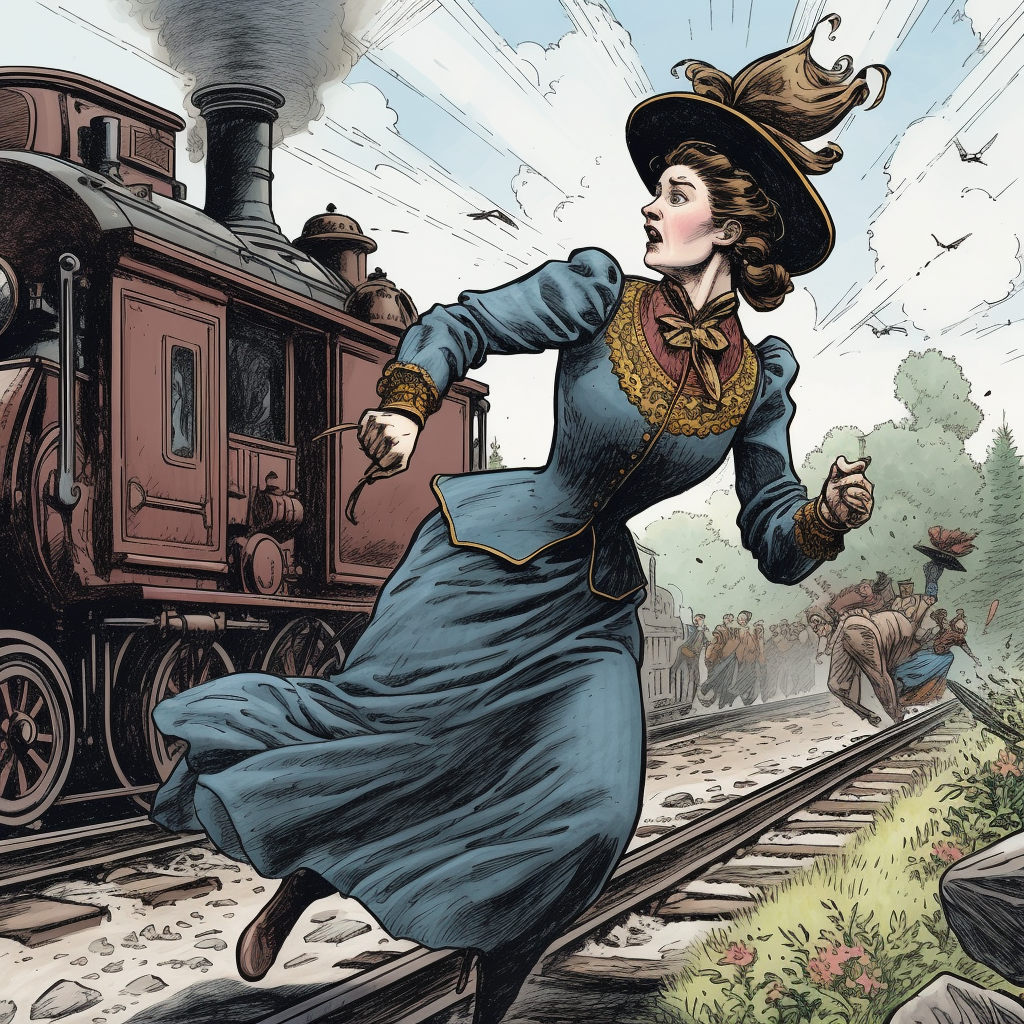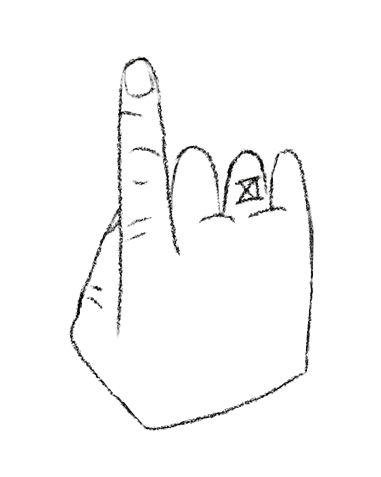There's a peculiar irony in the present moment, ensconced as we are in the lap of artificial intelligence – a product of human ingenuity that simultaneously spurs the greatest fears about our own obsolescence. To quote the wisdom of the French, plus ça change, plus c'est la même chose (the more things change, the more they stay the same).
Again we find ourselves chilled by the winter winds of change, our societal fabric threatened by job displacement, privacy concerns, even existential risk. As we've done before, we will find new paths, create new jobs, build new safeguards, and shape this new beast into a tool of progress. The pattern of fear and acceptance is a well-worn one, each technological leap arriving like a winter's storm, chilling us with its alienness, only to gradually give way to a spring of acceptance and, finally, a summer of integration.
So let's cast our gaze back, past the pixels, through the flickering wavy lines from that 1980s console television that ruined the social fabric (as if slavery and women's suffrage were marks of a great social fabric), beyond the pulses of radio waves that made books obsolete, and the fires and fear of the effects on our bodies from electric hum that powers it all.
Here are just a few reminders of the times every innovation emerged not as a beacon of hope, but as an omen of dread.
The Printing Press - Ah, Johannes Gutenberg, that irascible disruptor of the 15th century, whose printing press creaked under the weight of fear it brought. 'Information for all,' it cried, and society, shuddering, wondered if such openness would not spread confusion rather than knowledge.
Railroads - Then came the railroads of the 19th century, trains tearing across the land faster than one could follow. Here, we faced the amusing yet sincere apprehensions of our ancestors, who clutched their petticoats and top hats, fearing women's bodies were not capable of withstanding such high speeds and could melt.
Photography - Consider photography, that peculiar art of light and shadows, which emerged in the same century. Each snap of the early camera was met with a shiver. To capture an image was to steal a soul, they said. Dread framed each portrait in those early days.
Telegraph - And let us not forget the telegraph, that rattling, ticking marvel that shrunk the world. Would this incessant stream of communication disrupt the measured pace of society, people wondered. Letters, once written with thought and care, now seemed quaint, obsolete, in the face of this instant communication.
Electricity - As the 19th century rolled into the 20th, electricity illuminated the world and the anxieties of people. Would this ethereal force set their houses on fire? Would it meddle with the delicate balances within their bodies? Uncertainty flickered in every electric bulb.
Radio - The early 20th century gave us radio broadcasting. Books, once cherished companions, seemed threatened by this invisible storyteller. Would our minds soften, our thoughts grow lax, with this new form of entertainment?
Television - By mid-century, television entered our parlors. With it, critics feared the ruin of the social fabric, the decline of family conversations. Were we stepping into an era of intellectual decay?
Internet - As we approached the millennium's end, the internet arrived, pulling the future into the present. But its promise was tempered by fears of increased crime, loss of privacy, and the specter of unproductivity.
AI - And now, we stand at the precipice of another era, Artificial Intelligence, particularly its yet unrealized form, Artificial General Intelligence (AGI), stands fraught with potential and peril. It amplifies past fears within our collective psyche. Will these machines, once they achieve a human-like capability across a broad spectrum of tasks, spread disinformation, amplify existential threats, and threaten jobs, merely emulating the self-destructive tendencies intrinsic to our species?
Consider the paradox: AI, even in rogue hands, could unintentionally act as a unifying force, an unexpected digital ambassador. An AI designed to disrupt American banks could ricochet, wreaking havoc on China's financial edifice — a digital Pandora's box unleashing chaos but also potentially fostering global harmony (okay, a bit of a stretch).
In a digital era, cybercriminals purloining government secrets will become so adept that it could inadvertently drive opposing nations to forge truly shared defenses. Our national borders might blur, not via conventional diplomacy, but through mutual digital vulnerabilities.
AI, like a scalpel, can heal or harm — its impact hinges on the hand that wields it. We, as a global society, must navigate this terrain with discernment, turning even crises into opportunities for collaboration.
Still worried for your job? Let's take another gander at the past...
Agricultural Revolution (18th century) - The bucolic rhythm of the scythe and plow was usurped by new farming techniques and equipment, lessening the need for laborers. The fields grew quieter as the factories in the burgeoning urban landscapes hummed with promise.
Industrial Revolution (18th and 19th centuries) - A whirr of machinery, the clatter of the power loom, the spinning jenny, all heralded an era where human muscle gave way to metal. Manual labor, once the lifeblood of the textile industry, found itself increasingly sidelined. Yet new roles emerged, maintaining and operating these mechanical marvels.
Automobile Production (20th century) - Henry Ford's assembly lines, methodical and precise, lessened the need for craftsmen in favor of assembly workers. As cars took to the streets in increasing numbers, the nature of work in car production transformed.
ATMs (late 20th century) - Bank tellers, once the face of every transaction, found their roles reduced by Automated Teller Machines. But in this revolution, an interesting twist - more branches sprouted, altering tellers' roles from cash handling to customer service and sales.
E-commerce (late 20th and early 21st centuries) - As shopping carts became virtual and payment turned digital, brick-and-mortar stores felt the pinch. Yet, this upheaval sparked growth in warehousing, logistics, and IT services, breathing life into an entirely new employment landscape.
Digitization of Film and Photography (late 20th and early 21st centuries) - As rolls of film gave way to digital sensors, jobs in film development faded. In their place, opportunities sprung up in the fields of digital imaging, graphics design, and online media, painting a new picture of the industry.
Automation in Manufacturing (late 20th and early 21st centuries) - The assembly line met its match in the form of robots and automated systems, replacing many a human hand, especially in car production. But in their wake, roles in robot programming, maintenance, and system integration found room to flourish.
The Self Check-Out Aisle (present day) - It seems we've taken on the role of disruptor ourselves, sans the aid of AI. Who needs the quaint pleasantries exchanged over a conveyor belt of groceries when you can do it all yourself? People, it seems, adore the independence of the self check-out. That mild inconvenience of human interaction? Pish posh! We, in our relentless pursuit of efficiency, have proven we need no artificial intelligence to expedite our march towards automation.
While we ponder and pontificate, just remember that all things must end - the sobering mantra that underscores the transient nature of our existence. At some point, our human narrative will reach its final page, possibly at the deft helm of AI. Yet, one might place a surer bet on the hand we've already been playing: our own paradoxical, often self-defeating nature. Our innate capability to create and destroy in equal measure may prove to be the more potent catalyst for our curtain call.
Like baba says, "It's all perfect."
-Augustus

